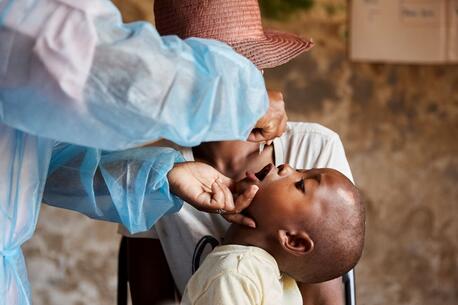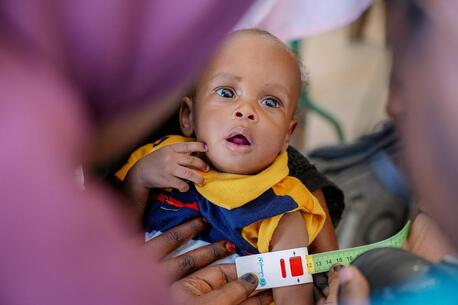
How Do Students Deliver 2 Million Packets of Miracle Food? Kid Power!
In May, these New York City 5th graders got active to save lives along with more than 170,000 other students across the country. The results were astounding.
“It’s a beautiful thing,” says 11-year-old Ibrahim, “to have a life in your hands and be able to help save it.”
“Since you can save lives just by moving, you don’t want to stop moving,” echoes David, his friend and 5th grade classmate.
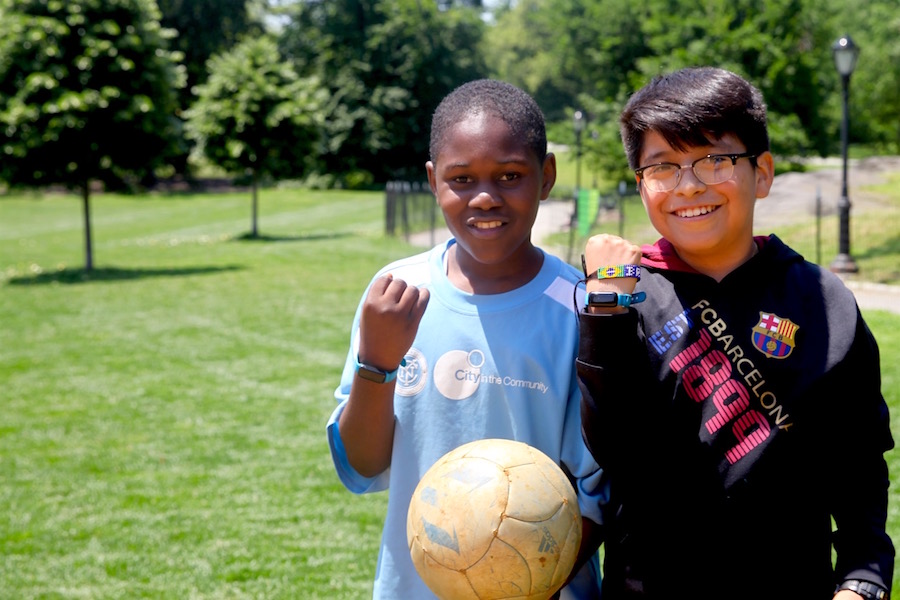 Ibrahim and David show off their UNICEF Kid Power Bands during Lexington Academy's Field Day in Central Park's East Meadow. © UNICEFUSA/Sandler
Ibrahim and David show off their UNICEF Kid Power Bands during Lexington Academy's Field Day in Central Park's East Meadow. © UNICEFUSA/Sandler
Ibrahim and David are taking a very short break from soccer, foot races and tug-of-war during Lexington Academy’s Field Day activities on the last day of May in New York’s Central Park. They’re talking about UNICEF Kid Power, the UNICEF USA program that gives kids the power to save lives just by getting active.
Delivering nearly 2 million packets of nutrition to severely malnourished children
As kids run, jump and play, their movements are measured by the Kid Power Band and count as a currency that unlocks lifesaving nutrition, in the form of packets of ready-to-use therapeutic food (RUTF) — often called the “Miracle Food.” A vitamin and energy-packed peanut paste, RUTF is UNICEF's most effective tool for treating acute and severe acute malnutrition, which, every year, threatens an estimated 16 million children worldwide.
UNICEF, the world's largest provider of RUTF, delivers these packets to provide treatment for severely malnourished kids. During May, UNICEF Kid Power Month, 170,000 students took part in the program all across America, bringing the year-to-date total to an astonishing 1,817,914 packets unlocked. The global total — kids in the Netherlands and the U.K. joined in to work together with their American peers — is just shy of 2 million packets!
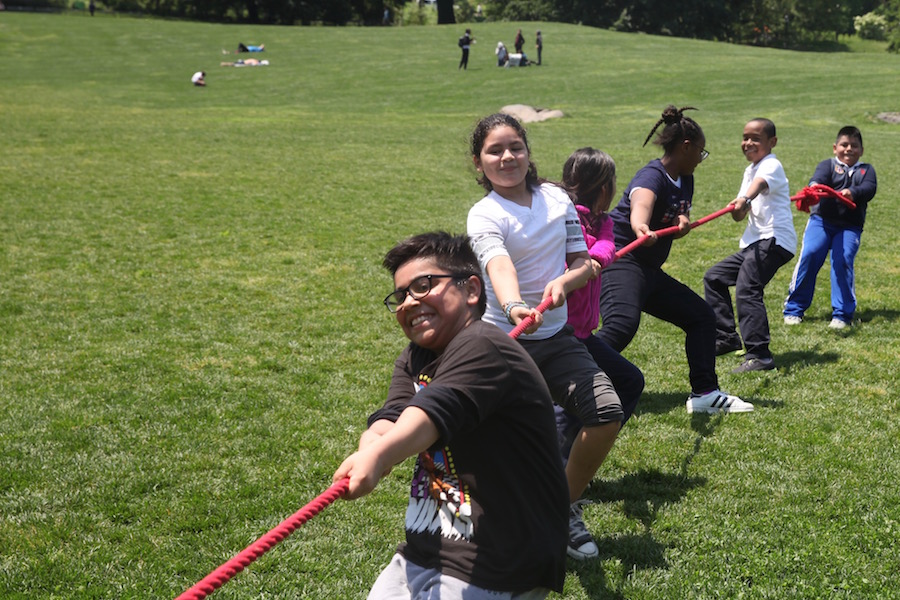 Field Day fun: Lexington Academy students in the tug-of-war. © UNICEFUSA/Sandler
Field Day fun: Lexington Academy students in the tug-of-war. © UNICEFUSA/Sandler
To say Kid Power motivates children to get active is an understatement. Ibrahim is observing Ramadan, but he’s still a non-stop blur of motion on the small soccer field set up in Central Park's East Meadow. “Right now, I’m fasting,” he says, “but I’m still moving, always moving. My mom tells me I’ll get tired. I never do.”
The program has been a boon for Lexington Academy, where student opportunities for exercise are limited. The building’s single gym — shared with a middle school — can’t begin to serve all of the school’s students. Some classes get gym class once a week. Other classes don’t get gym at all. Ongoing construction in the schoolyard has reduced the opportunity for outdoor recess all year long.
Motivating kids to get active both at home and in school
But spurred on by the Kid Power Bands they wear, Lexington Academy students have been overcoming the school's physical limitations. "They get very excited about collecting points. It's really fun," says 5th grade teacher Monique Coleman. "Kids wear their bands at recess. They take them home. They use them on the way to school and on weekends. We also have movement sessions in class."
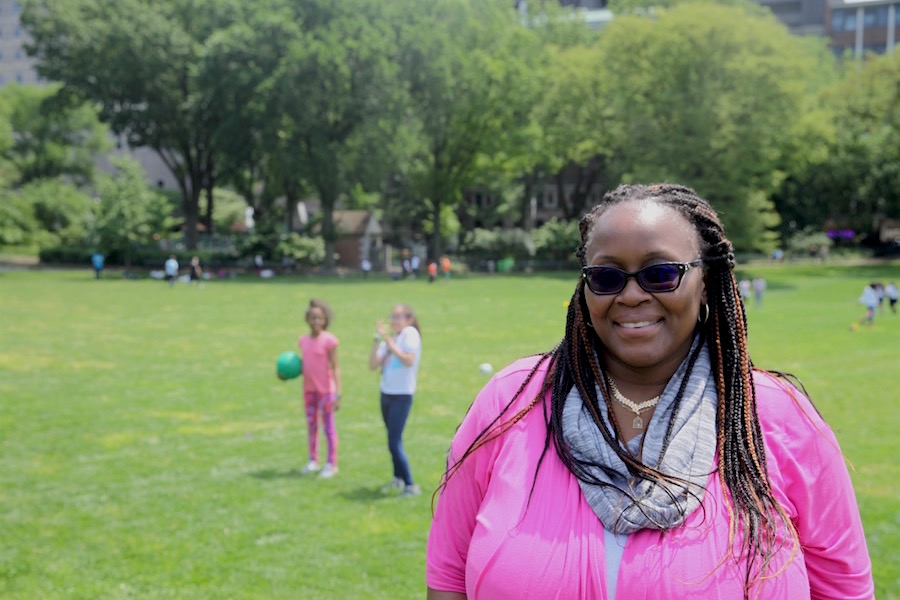 Lexington Academy 5th grade teacher Monique Coleman on the UNICEF Kid Power program, "Students like the fact that they're helping kids in other countries." © UNICEFUSA/Sandler
Lexington Academy 5th grade teacher Monique Coleman on the UNICEF Kid Power program, "Students like the fact that they're helping kids in other countries." © UNICEFUSA/Sandler
Ibrahim, in teacher Jeffrey Zohn's 5th grade group, is often a leader of these in-class movement sessions. "I propose exercises that get points fast, like jumping jacks, push-ups and just getting crazy," he says.
"Once you start, you don't ever want to stop," adds David.
Connecting movement, nutrition and helping kids around the world
Mr. Zohn runs the UNICEF Kid Power program at Lexington Academy and is appreciative of its value. "The kids don’t get to play outside so it’s nice to be able to have more active movement in the classroom. It's great to be able to talk about food and nutrition; that connects to our science unit, " he says, "and as a teacher, it's easy to work with. It's very simple to integrate with the rest of our daily or weekly schedule."
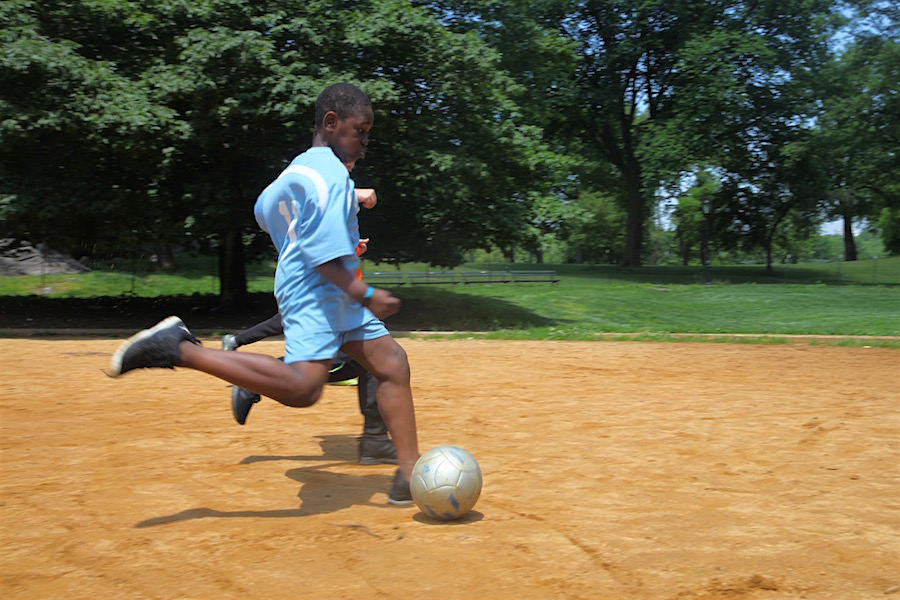
Ibrahim, with David alongside, shoots downfield during Field Day soccer. © UNICEFUSA/Sandler
For students, he says, the appeal stems from a combination of factors. “There’s the ability to get up and move and make noise and do things — we spend all day trying to get them to sit down and be quiet and work, so I understand for the kids how valuable it is to have a moment where they are able to move and get up and express themselves.
Other kids are really motivated by the global citizen aspect. Helping kids in other countries, learning what life is like in these other countries. And of course the bands. The bands are tons of fun. Kids love technology. And having that agency, that responsibility to look after them, gives them, I think, a stronger sense of self."
The Kid Power Band, available at unicefkidpower.org, target.com or your local Target store, was named as one of Time magazine's "Best Inventions" of 2016. This year's innovation is band-free technology for those who prefer to track their activity on their smartphones. Join the Kid Power team today. Because everyday actions can help save lives!
Teachers who are interested in bringing the Kid Power program into their classrooms can purchase the lessons and activities kit at the Teacher Store at Scholastic.com. You can also bring Kid Power to your workplace. Visit workplace.unicefkidpower.org for details.

5th grade teacher Jeffrey Zohn with his students Ibrahim and David. © UNICEFUSA/Sandler
HOW TO HELP
There are many ways to make a difference
War, famine, poverty, natural disasters — threats to the world's children keep coming. But UNICEF won't stop working to keep children healthy and safe.
UNICEF works in over 190 countries and territories — more places than any other children's organization. UNICEF has the world's largest humanitarian warehouse and, when disaster strikes, can get supplies almost anywhere within 72 hours. Constantly innovating, always advocating for a better world for children, UNICEF works to ensure that every child can grow up healthy, educated, protected and respected.
Would you like to help give all children the opportunity to reach their full potential? There are many ways to get involved.




